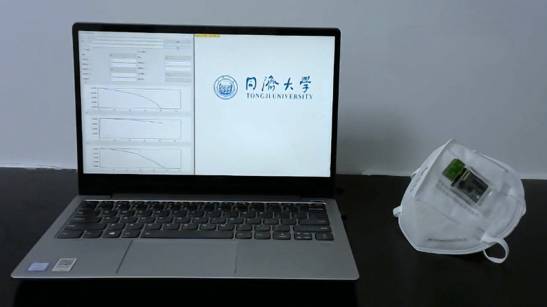A Chinese scientific team has created a mask that can detect respiratory viruses most common, such as flu and coronavirusin the form of drops or sprays.
This highly sensitive mask alert users via your mobile devices within 10 minutes if pathogens are present in the surrounding air. The development results are presented this week in the journal Matter.
Previous research has shown that wearing masks can reduce the risk of contagion and contracting the disease. That’s why we wanted to create one that would be able to detect the presence of viruses in the air and alert the user
“Previous research has shown that wearing masks can reduce the risk of contagion and contracting the disease. So we wanted to create one that was able to detect the presence of viruses in the air and alert the user,” he explains. yin preylead author of the study and a materials scientist at Tongji University in the Chinese city of Shanghai.
Schematic of the new portable bioelectronic mask for detection of airborne infectious respiratory disease viruses. / Matter/Wang et al.
The respiratory agents that cause influenza (H1N1) and covid-19 are spread by small droplets and aerosols released by infected people when they speak, they cough and sneeze. These virus-containing molecules, especially tiny aerosols, can remain suspended in the air for a long time.
Fang and his team tested the mask in a closed chamber by spraying the viral surface protein with liquid, trace-level aerosols on the mask. The sensor responded to just 0.3 microliters of fluid containing viral proteins, between 70 and 560 times less than the volume of fluid produced by a sneeze and far less than that produced by coughing or speaking.
The team designed a small sensor with aptamers, which are a type of synthetic molecule that can identify unique proteins from pathogens such as antibodies. In their proof-of-concept project, the team modified the multichannel sensor with three types of aptamers, which can simultaneously recognize the surface proteins of viruses. SARS-CoV-2 and those of H5N1 and H1N1 influenza.
Detection in 10 minutes
Once aptamers bind to target proteins in the air, the ion activated transistor connected amplifies the signal and alerts users through their phones. This transistor is a new type of highly sensitive device, so the mask can detect even airborne pathogen levels within 10 minutes.
“Our mask would work very well in poorly ventilated spaces, such as elevators or closed rooms, where the risk of becoming infected is high,” says the expert. In the future, if a new respiratory virus emerges, they can easily update the sensor design to detect the new pathogens, he adds.
So the team waits shorten detection time and further increase sensor sensitivity by optimizing the design of polymers and transistors. It is also working on wearable devices for various health issues, including cancer and cardiovascular disease.
“Currently, physicians rely heavily on their expertise to diagnose and treat disease. But with more detailed data collected by wearable devices, the diagnosis and treatment of disease can be more accurate,” says Fang.
Reference:
yin prey et al. “Wearable bioelectronic masks for wireless detection of respiratory infectious diseases by gaseous media”. Matter2022
